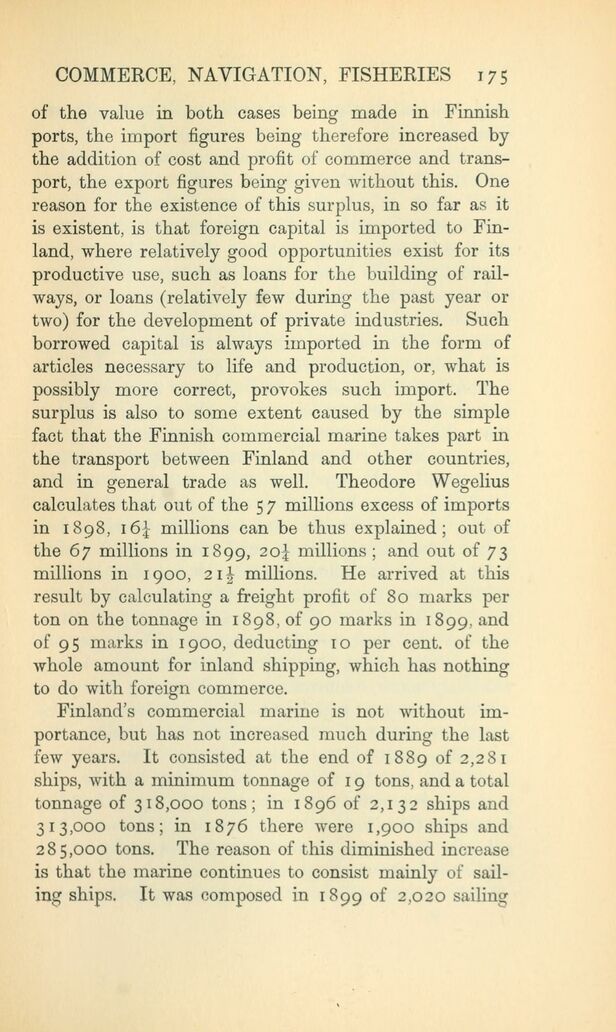
Full resolution (JPEG) - On this page / på denna sida - VII. Commerce, Navigation, and Fisheries

<< prev. page << föreg. sida << >> nästa sida >> next page >>
Below is the raw OCR text
from the above scanned image.
Do you see an error? Proofread the page now!
Här nedan syns maskintolkade texten från faksimilbilden ovan.
Ser du något fel? Korrekturläs sidan nu!
This page has been proofread at least once.
(diff)
(history)
Denna sida har korrekturlästs minst en gång.
(skillnad)
(historik)
of the value in both cases being made in Finnish
ports, the import figures being therefore increased by
the addition of cost and profit of commerce and
transport, the export figures being given without this. One
reason for the existence of this surplus, in so far as it
is existent, is that foreign capital is imported to
Finland, where relatively good opportunities exist for its
productive use, such as loans for the building of
railways, or loans (relatively few during the past year or
two) for the development of private industries. Such
borrowed capital is always imported in the form of
articles necessary to life and production, or, what is
possibly more correct, provokes such import. The
surplus is also to some extent caused by the simple
fact that the Finnish commercial marine takes part in
the transport between Finland and other countries,
and in general trade as well. Theodore Wegelius
calculates that out of the 57 millions excess of imports
in 1898, 16¼ millions can be thus explained; out of
the 67 millions in 1899, 2o| millions; and out of 73
millions in 1900, 21½ millions. He arrived at this
result by calculating a freight profit of 80 marks per
ton on the tonnage in 1898, of 90 marks in 1899, and
of 95 marks in 1900, deducting 10 per cent, of the
whole amount for inland shipping, which has nothing
to do with foreign commerce.
Finland’s commercial marine is not without
importance, but has not increased much during the last
few years. It consisted at the end of 1889 of 2,281
ships, with a minimum tonnage of 19 tons, and a total
tonnage of 318,000 tons; in 1896 of 2,132 ships and
313,000 tons; in 1876 there were 1,900 ships and
285,000 tons. The reason of this diminished increase
is that the marine continues to consist mainly of
sailing ships. It was composed in 1899 of 2,020 sailing
<< prev. page << föreg. sida << >> nästa sida >> next page >>